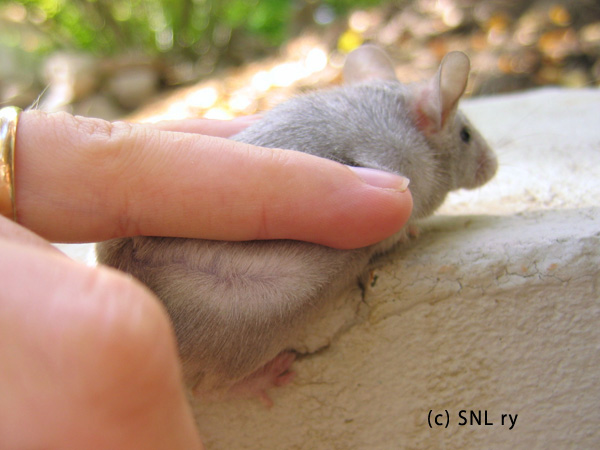Varieties
Silver-ticked
Pearl (pe)
a/a B/b d/d si/si
a/a B/B d/d si/si pe/pe
a/a B/b d/d si/si pe/pe (lightest)
"Eyes black. A Pearl mouse shall be of the palest silver, shading to a whitish undercolour. Each hair shall be delicately tipped with grey or black and carried out top and belly."
Breeding information below the pictures.
Note: This article is old and waiting to be rewritten.
Quick Look
Pearl is presumably closely related to silver greys. If there are no pearls to start with, they may be obtained by mating together light silver grey mice which lack good undercolour. The undercolour should be "whitish" not white, which distinguishes pearl from the lightest silver greys. Mating ailver grey to silver brown should produce pearl, as this variety requires 'B' from black and 'b' from chocolate. Pearl mice are difficult to show as their tendency to molt affects their appearance.
The pearl mouse is not known for outstanding size or type, but they do have large, bold and bright eyes. Tony Cooke writes, that silver greys with the lighter undercolour should be separated from silver grey lines and bred together. Once there are reasonable amount of these, they should be crossed with silver blue. This should, then, produce the right undercolour with too dark top colour. In order to correct this, one should mate dark pearl mice with ones derived from silver blue / self silver crosses, continuing then by blending shades and selecting.
My silver grey breeding friend reported, that when he tried mating silver greys with the lightest undercolour, there appeared also darker and darker silver greys... These were, of course, the BB silver greys segregating from the others. I forgot to ask how many silver browns / chocolates appeared. I personally can't see what difference would introducing the pink-eyed gene (from self silver) would do to benefit breeding pearls... When the blue and the silver both have the tendency for darker roots of hair, they would not benefit in that arena either.
There is also a gene called "pearl", pe. It is sometimes speculated, if this would cause the pearl mouse. However, Silvers writes that the effect of the pe -gene on a non-agouti black background (that is a/a B/* pe/pe) resembles that of the ruby-eyed gene ru. This is said to be a dull dark sepia coloured mouse with ruby eyes. The only difference according to him is the light undercolour of the pearl mouse.




